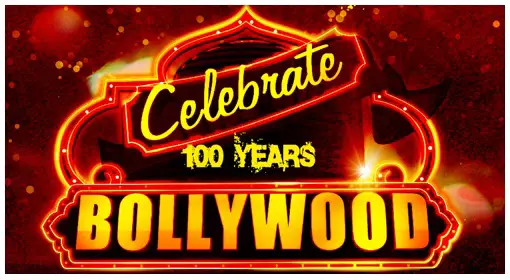 Bollywood, the Hindi-language film industry based in Mumbai, India is one of the largest centers of film production in the world. In recent times new breed of filmmakers have contributed a lot to Bollywood, in terms of innovation and new story ideas, and also going to virgin locations to show them to the audience.
Bollywood, the Hindi-language film industry based in Mumbai, India is one of the largest centers of film production in the world. In recent times new breed of filmmakers have contributed a lot to Bollywood, in terms of innovation and new story ideas, and also going to virgin locations to show them to the audience.
The Indian film industry has now reached a stage where it is catering to domestic as well global audiences. Hindi films made in Bollywood, are released throughout in India on both single and multi-screen theatres, and most of them are screened overseas as well.
English Vinglish, the 2012 movie about a housewife’s journey of self-transformation, has had an equally fruitful, journey of its own. Gauri Shinde’s debut opens in Japan on 28 June after runs in Hong Kong, Germany, Taiwan and South Korea.
English Vinglish is not the first Indian movie to open in Japan—previous releases include Om Shanti Om and Student of the Year. And it won’t be the last, given the recent expeditions by Mumbai’s major entertainment companies to new territories and markets.
Bollywood is in serious globe-trotting mode, popping up in previously unexplored places, settling down for good in established centres such as the Arab belt, the UK, Canada and the US, and revisiting markets that had gone dry over the years. A game that used to be in the hands of independent distributors is being increasingly controlled by A-lister entities such as Yash Raj Films, Eros International Plc, Disney India, B4U, Fox Star Studios and Big Pictures.
My Name is Khan went to Germany, Poland, Peru and South Korea; Chennai Express was released in 50 territories including Israel, Ireland, Sri Lanka, Austria, Myanmar and Norway; Dhoom: 3 opened in several territories including Australia, the Netherlands, Singapore and Vietnam, and will open in China on 25 July. Goliyon Ki Raasleela Ram-leela travelled to Switzerland, France and Germany. Taiwan has seen Peepli (Live) and Dhobi Ghat, and Hong Kong, Delhi Belly. And 2 States will open in Taiwan and Barfi! in Japan in August.
Movie lore about enterprising distributors carting cans of 35mm prints across borders for homesick immigrants has given way to press releases from Mumbai-based companies extolling the conquest of yet another exotic destination. The movies don’t release as widely as they do back home, but they are totting up respectable enough figures. Eros claimed $100,000 (around Rs.60 lakh today) box-office figures for Cocktail across Kazakhstan and Kyrgyzstan, and $300,000 for English Vinglish in Taiwan, while Dhoom: 3 posted gross collections of $25 million within the first two weeks.
“Earlier, Bollywood was clubbed under world cinema, but it is now a category in itself, below Hollywood but on par with other films,” said Pranab Kapadia, president (marketing and distribution) at Eros International.
The conquest of new territories is prompted partly by the saturation of established ones.
“Five years ago, a film opening on 400 screens was a big deal and now, it is 800-900,” said Amrita Pandey, vice president and head (marketing and distribution for studios) at Disney India. “We need monetizing opportunities and these overseas territories help us a great deal, although international revenues don’t help us fund our films.”
Exporters have been sending out films since the 1930s. The circuit was traditionally controlled by small, usually family-run, companies and worked on contacts and commissions. The releases often did more for a star’s fan base than a producer’s bottom line.
An “Overseas Highlights” page from a 28 July 1979 issue of trade publication Trade Guide contains terse observations on the business, including “Amitabh (Bachchan) continues to be the topmost draw in overseas followed by Rishi Kapoor and Dharmendra”, and “It is a fact that in USA, exhibitors sometimes make more money out of the samosas they sell during the interval than out of the film”.
The streamlining of a colourful yet chaotic way of functioning can be attributed to the fact that “distribution methods have changed and become more mainstream”, said Mike Spaeth, chief operating officer at Georgia-based distribution firm Alerion Services Llc, which has handled several Hindi and regional films including 3 Idiots. “What was hidden is now there for all to see,” he added.
Until two decades ago, producers sold their wares to buyers who in turn sold it to theatres, Spaeth said, and added: “You would sell your movie to some random person in San Diego, and the film might travel to four other cities that you had no idea about. We have now moved towards a more corporate and transparent distribution.”
3 Idiots opened in 120 locations, and 120 gross box-office receipts were available on earnings tracker Rentrak, he added.
The scene was markedly different when Maganbhai Savani started exporting Hindi films in 1947 through his company International Film Distributors. He started with East Africa, a major Indian diaspora hub. Savani is also a textile exporter, so he killed two birds with a stone—he sold cloth and cinema during his visits to the region.
“We took all kinds of films to East Africa, mainly to Kenya, Uganda and Tanzania,” said the 91-year-old distributor. “Then, we started exploring new markets, like the Gulf, West Africa and North Africa, places like Bahrain and Dubai, Syria, Lebanon, Jordan, Iran, Morocco, Tunisia, Algeria, Nigeria, Ghana, Sierra Leone, Cameroon, Ghana, Gambia.” The scene was characterized by guesswork and gumption. “I would explain what the movie was about, since our culture was so different,” Savani said. “There was the problem of language, so I started subtitling and dubbing the films. We would often cut down the length—the songs were usually dropped.”
Over time, Savani came to understand the tastes and preferences of diaspora audiences.
“Jai Santoshi Maa (the successful 1975 mythological) was a hit even in places like Birmingham and Manchester that have large Muslim populations,” he said. South Africa and East Africa like the socials, while West Africa likes action pictures; North Africa likes both. One of his biggest successes is Haathi Mere Saathi, the 1971 movie starring Rajesh Khanna, Tanuja and an elephant. “The movie created history in Singapore and Malaysia,” Savani said. “We sent three prints, but then we required 35.” In some cases, audience interest had to be created where none existed. “In Greece, theatres would not touch Hindi films, so we gave them away for free,” he added.
The scattershot efforts of distributors like Savani have ensured the circulation of anecdotes about Cairo residents flagging down Indians and inquiring after the health of Amitabh Bachchan and Muscovites serenading tourists with Awara Hoon.
The former Soviet Union was a major centre for Hindi cinema. Sudha Rajagopalan’s study of Indian cinema in the Soviet bloc, Leave Disco Dancer Alone! Indian Cinema and Soviet Movie-Going After Stalin, shows how a cultural exchange between friendly governments made international celebrities out of Raj Kapoor, Nargis and Mithun Chakraborty.
Indian films were already being shown in the USSR, but in 1965, it became very official after Sovexportfil’m, the organization that handled the import and export of films, “formulated an annual plan and communicated it to regional offices in India”, writes Rajagopalan. This plan required Sovexportfil’m to import between eight and 10 films every year from India, whose socialist bent was preferable to Hollywood’s “capitalist” designs.
Rajagopalan’s research indicates that “while the number of films imported from India was comparable to imports from countries such as the UK, France and the US…Indian films were probably the most actively promoted by distributors and publicity departments”.
Mainstream films like Abdullah and Disco Dancer were highly popular, with Disco Dancer attracting “60.9 million Soviet viewers in 1984, the highest turnout for any film (domestic or foreign) that year”.
The book’s title is inspired by anguished letters of protest against critical reviews of Disco Dancer, with the writers praising lead actor Mithun Chakraborty’s “splendid and wonderful self”.
The journey overseas has its hurdles—fluctuating exchange rates, political instability (Apartheid ruined the South African market; the threat of civil war has gutted Arab centres such as Egypt, Lebanon and Iraq) and Hollywood’s dominance over popular taste in lucrative markets such as China.
“In South Korea, every film didn’t do what (Sanjay Leela Bhansali’s) Black did,” said Disney’s Pandey. “Malaysia is better for Tamil films than Hindi films. The UK continues to be strong, but the ticket pricing is high and not everybody comes for everything.”
The volume of Hindi film production ensures a steady supply, but the demand can depend on Hollywood. Sunil Udhani, distribution head at Multivision Multimedia India Pvt. Ltd, which operates in India and South-East Asia, said that the locals come only if the movie is seen as “crossover”—something local yet global yet enough to connect with their lives. “The first targets are the non-resident Indians,” he said. “We have experimented with other films, but in these places, only Shah Rukh Khan and Salman Khan work, rather than newcomers.”
Hollywood dominates the release calendar, so the scale of release of Hindi films is modest, Udhani added.
A safer bet is in the neighbourhood, where Indian films continue to thrive despite political tensions and piracy.
Pakistani cinema has seen a revival in recent years, but until it achieves respectable numbers, Bollywood will rule the roost. “I would be lying if I said that we are making all our money from Pakistani films,” said Hashim Raza, chief operating officer of the Cinepax chain, which has five multiplexes and is in the process of adding more across the country. “Most of our money is made from Indian content. The current Pakistani market represents a very thin pipeline.”
The independents might have paved the way for larger companies, but one reason they could not flourish was because of the Indian way of doing business, Raza said.
“These guys would ask upfront for cash deals, they would tell an exhibitor to pay in dollars and then hand over the film exclusively to him,” he said. “That is changing very fast—we deal directly with companies like Yash Raj Films, and we have direct contacts with all the leading filmmakers.”
Indian producers are “so focused on getting 75% of a six-inch pie that they don’t know that there is a 12-inch pie that they can have half of”, said Alerion’s Spaeth.
“As late as 2007, leading studios were taking minimum guarantees (a lump sum paid by the producer to the distributor before a release) from the exhibitors even in major markets and giving exclusive rights to certain exhibitors,” he said. “The audiences are for the most part Indians, but in order to reach out to those who usually watch a Polish or an Iranian film, you have to forsake your diaspora and take a gamble.” Korean and Filipino films have managed to hit audiences beyond their linguistic pockets, but their scale of production is far smaller than India, Spaeth pointed out. “These guys are choosier, but in the case of Indians, anything with a Hindi title is out every week,” he said.
Shifting tastes can also lead to income drops from safe territories. “Lots of Lebanese used to watch Indian films earlier, but they now watch American and local Arab films,” said Beirut-based Bassem Eid, programming manager at Empire Cinemas chain. “Piracy is also a problem, since Indian films are easily available here (in Beirut) everywhere. And on Sunday, nobody wants to programme Indian films.” But there continues to be a demand for Indian films from the Gulf countries, Eid added. “We usually keep Indian films for at least one or two weeks. We tried with Dhoom: 3, but because it was Christmas and there were many releases, the movie didn’t take what it deserved,” he said.
Eros International ventured as far out as the Cayman Islands in the Caribbean, only to return disappointed. “We released four to five films there for the 500-strong community, but only for one show,” Eros International’s Kapadia said. “The cinemas were so run-down that we could not sustain it. You need the right film at the right price with the right atmosphere.”
The Cayman Islands experience was the result of a meeting in London between Eros and the community head of an association of Indians living there—a typical example of the role played by diplomacy and community initiative in the opening of doors to Hindi cinema.
In this regard, Peru deserves a separate chapter. The South American country has only about 50-60 Indian families, but it’s the locals that sustain Bollywood there. Hindi cinema landed up there because of Arun Kapur, a member of the family that runs Kamal Cinema in Delhi. Kapur’s Cinestar exhibition chain and Star distribution company have released dubbed versions of My Name is Khan, Chennai Express and Dhoom: 3 for the natives, who like the “heavy drama and soap opera”, said Kapur’s son, Varun Kapur.
“My father first came to Argentina in 1978, where the Indian ambassador told him to create a market for Indian films,” Varun Kapur said. Arun Kapur later moved to Peru, where he started showing Indian films that he would personally escort from India.
“The Latin American market is Westernized and mostly about Hollywood,” Varun Kapur added. “But Indian films do good business because of their sentimental appeal.” Chennai Express attracted at least 100,000 moviegoers—the average figure for a blockbuster is about 300,000, added Varun Kapur’s brother, Aman Kapur.
Arun Kapur has previously shown popular Indian titles like Mother India, Mera Naam Joker, Boot Polish and Haathi Mere Saathi, said his brother, Lalit Kapur, who lives in Mumbai and runs Movietime multiplex chain. “We reissued Mera Naam Joker twice. Haathi Mere Saathi was also very big,” he said. But they drew a blank in Venezuela and Argentina. “Not everybody can digest Indian films,” he added.
Few A-list actors sing songs and wiggle their bottoms amid heartbreak and nation-saving as do the Indians. Yet, improved production values, a lightening of subject matter, and greater resemblance to globally accepted themes have eased along the overseas journey.
“We released Rang De Basanti (2006) in 28-30 territories, and since then new markets have opened up for us,” said Disney’s Pandey. “We have also been putting films been on TV platforms, such as Italy’s Rai and Kazakhstan broadcasters. Film festivals build the base for going into theatres. In some places, Hindi films are programmed only for the weekend. Over the past few years, such things have moved the needle.”
The rapid domestic and foreign movie trade, and the increasing control exerted by studios and companies with deep pockets, have decreased the risk-taking appetite of pioneers like Savani. “The business is very risky now,” said Savani, who holds onto a library of about a thousand older titles. “Only companies that do business with public money will survive.”
He remembers the joy with which 1963’s Mere Mehboob was greeted in Birmingham. “As many as a thousand pounds were collected from audiences who threw money at the screen,” Savani said. “But we gradually withdrew in the ’90s and people started going to the corporate companies. It doesn’t make sense any more unless you are fond of gambling.”
Source: livemint.com…




